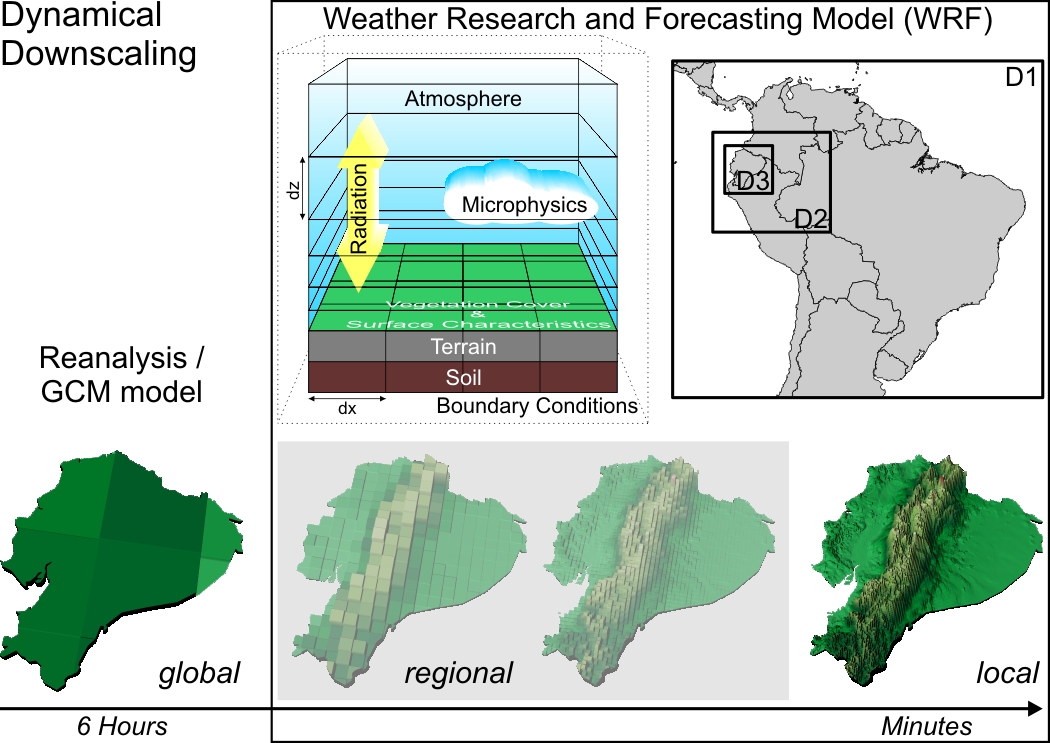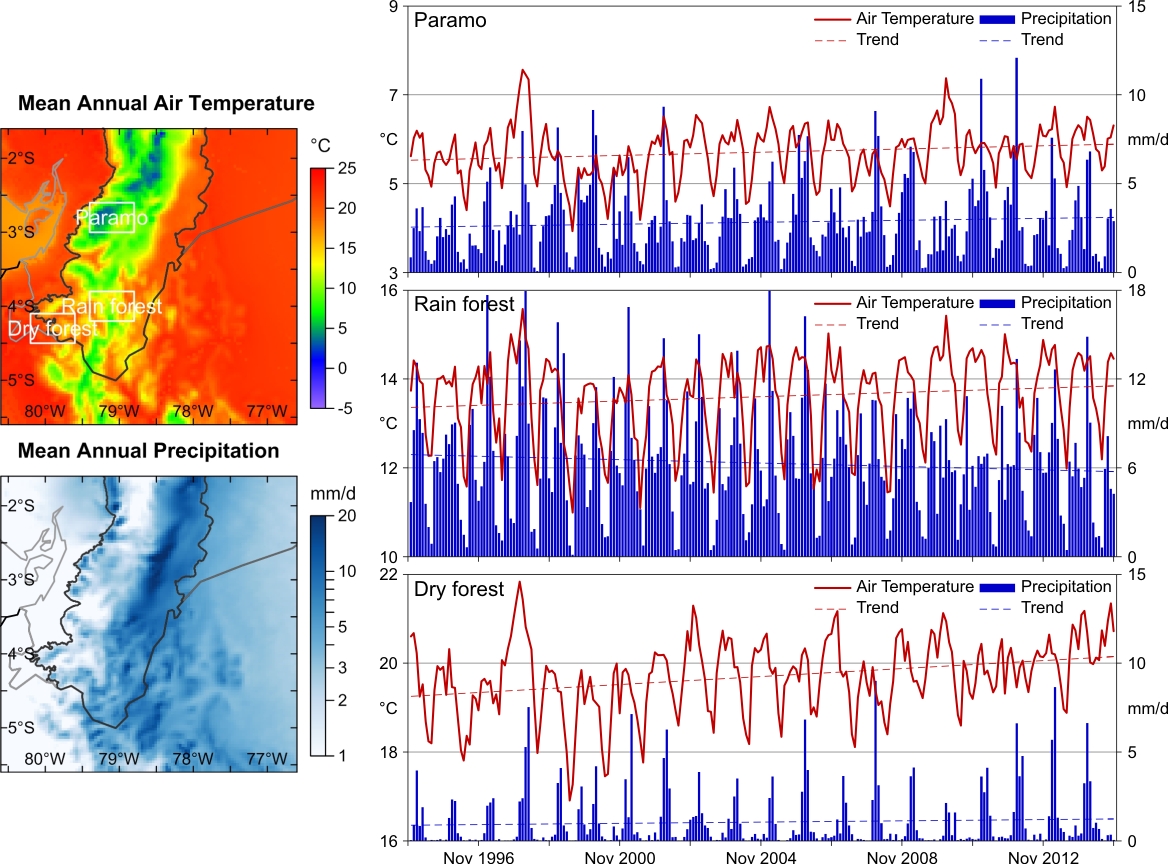DFG PAK 823-825: Climate indicators on the local scale for past, present and future [funded by DFG] - Status: closed
Project staff:
Prof. Dr. Jörg Bendix
Abstract:
 The main objective of this project is the generation of a high resolution climate indicator system (hrCIS) for the Andes Mountains of Southern Ecuador relevant for ecosystem research. The gridded / spatial-explicit climatology is produced by applying the numerical grid box model Weather Research and Forecasting (WRF) and will be dynamically downscaled from the global scale to the regional / local scale. In this way the complex structure of the Andes Mountains will be captured which enables the reflectance of local scale interactions between the topography and the adjacent atmosphere. Thus, it will improve the representation of locally driven precipitation formations. Moreover, due to the high spatial resolution the heterogeinity of the ecosystems such as mountain rain forest, dry forest and Paramo can be differentiated. In the context of recent climate trends the hrCIS facilitates the evaluation of not only general climate regimes, but also climate indicators affecting the ecosystems typical for Southern Ecuador.
The main objective of this project is the generation of a high resolution climate indicator system (hrCIS) for the Andes Mountains of Southern Ecuador relevant for ecosystem research. The gridded / spatial-explicit climatology is produced by applying the numerical grid box model Weather Research and Forecasting (WRF) and will be dynamically downscaled from the global scale to the regional / local scale. In this way the complex structure of the Andes Mountains will be captured which enables the reflectance of local scale interactions between the topography and the adjacent atmosphere. Thus, it will improve the representation of locally driven precipitation formations. Moreover, due to the high spatial resolution the heterogeinity of the ecosystems such as mountain rain forest, dry forest and Paramo can be differentiated. In the context of recent climate trends the hrCIS facilitates the evaluation of not only general climate regimes, but also climate indicators affecting the ecosystems typical for Southern Ecuador.
Description:

In a first step the performance of WRF will be tested and the model will be adjusted to the complex region of the Andes Mountains of Ecuador. Uncertainties in the model are assessed in an extensive sensitivity study encompassing various parametrization scheme combinations, e.g. cumulus convection, microphysics, land-surface models, radiation and PBL pyhsics. The model results are validated against observational data (in-situ measurements and remote sensing satellite data) to assure the accuracy of the hrCIS.
The hrCIS is a set of area wide gridded variables like air temperature, precipitation, wind field, radiation, surface fluxes etc. and covers the time period December 1994 til November 2015 owing a spatial resolution of 4 km. In complex regions as the Andes Mountains such hindcast simulations facilitate analysis of recent climate trends in atmospheric conditions as well as its feedbacks to the ecosystems.
Analysis of the temporal evolution of air temperature and precipitation for each ecosystem (Paramo, Rain forest, Dry forest) demonstrate that WRF successfully reflects the different characteristics. Further, the results highlights the ability to reproduce typical interannual variability of the climate indicators.
With respect to climate trends in the study area an increase in air temperature can be recognized while precipitation reveals no trend.
Publications and poster presentations:
2018 - Trachte, K. (2018): Atmospheric Moisture Pathways to the Highlands of the Tropical Andes: Analyzing the Effects of Spectral Nudging on Different Driving Fields for Regional Climate Modeling. Atmosphere 9, 1-24.
- Campozano, L.; Trachte, K.; Celleri, R.; Samaniego, E.; Bendix, J.; Albuja, C. & Mejia, J.F. (2018): Climatology and Teleconnections of Mesoscale Convective Systems in an Andean Basin in Southern Ecuador: The Case of the Paute Basin. Advances in Meteorology 2018, 1-13.
- Trachte, K.; Seidel, J.; Figueroa, R.; Otto, M. & Bendix, J. (2018): Cross-Scale Precipitation Variability in a Semiarid Catchment Area on the Western Slopes of the Central Andes. Journal of Applied Meteorology and Climatology 57(3), 675-694.
2016 - Campozano, L.; Celleri, R.; Trachte, K.; Bendix, J. & Samaniego, E. (2016): Rainfall and Cloud Dynamics in the Andes: A Southern Ecuador Case Study. Advances in Meteorology 2016(ID 3192765), 15.




